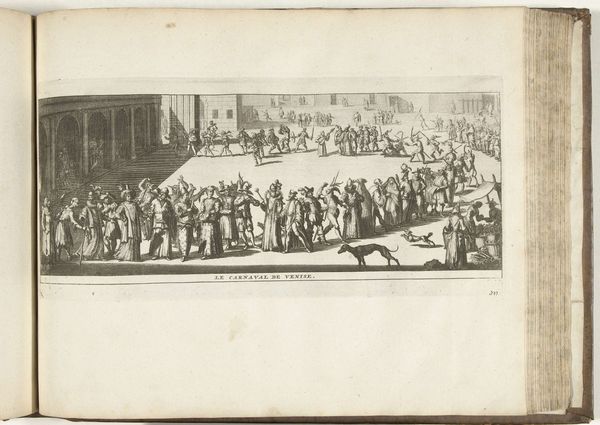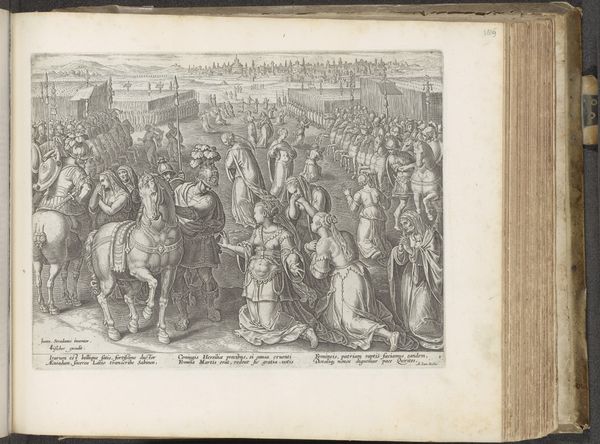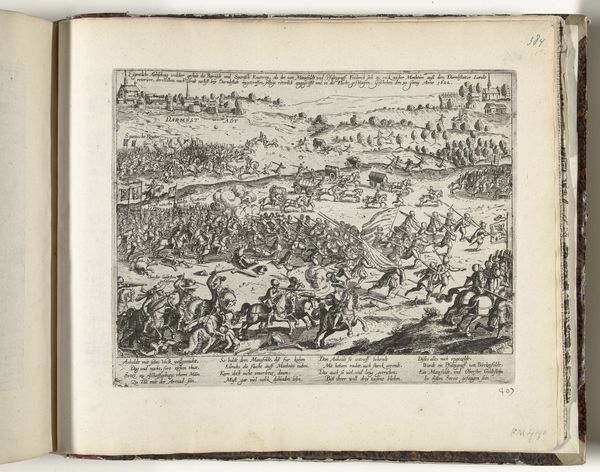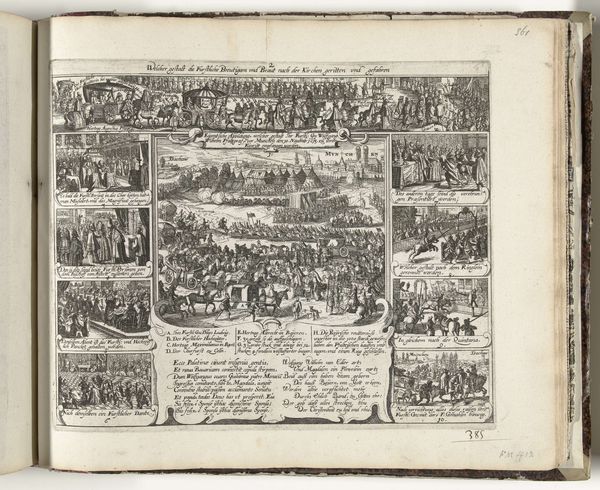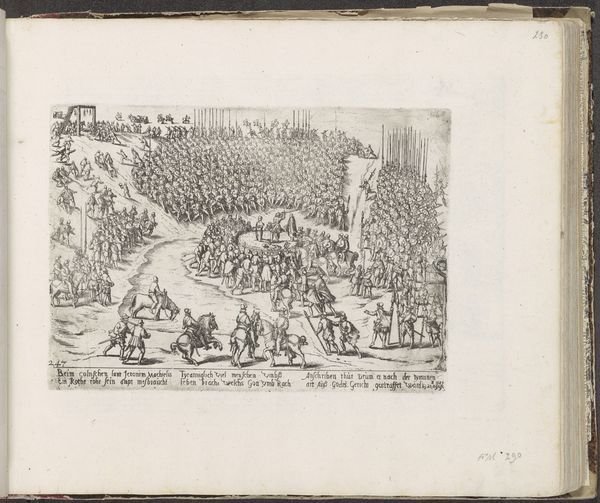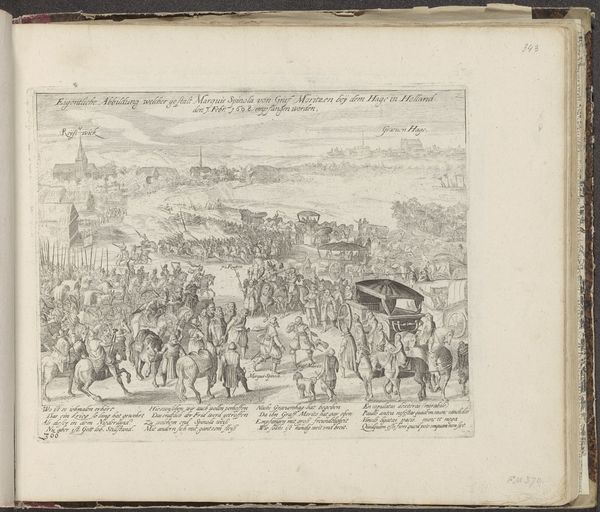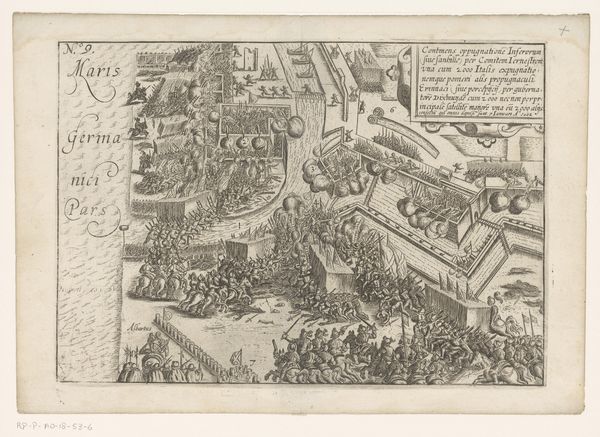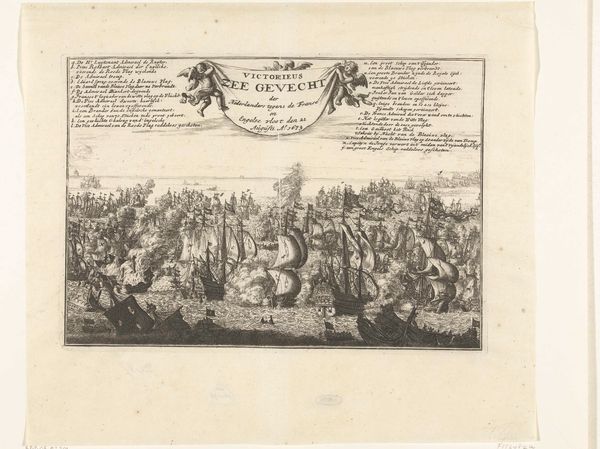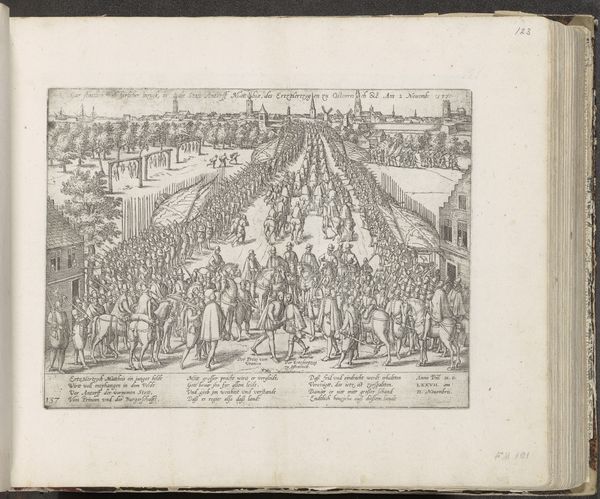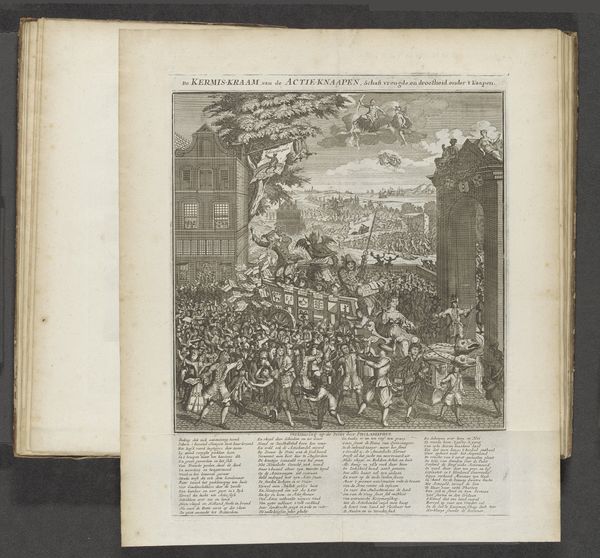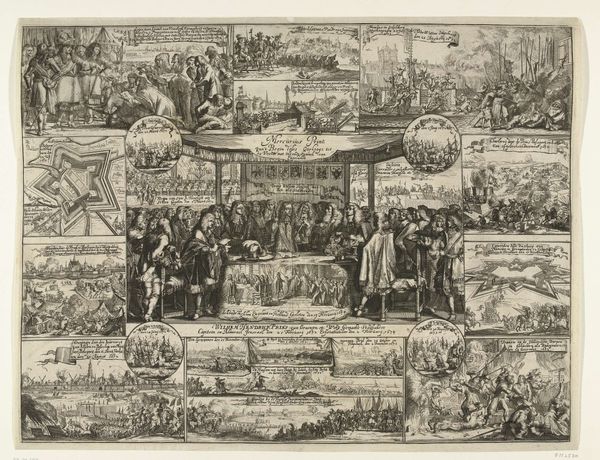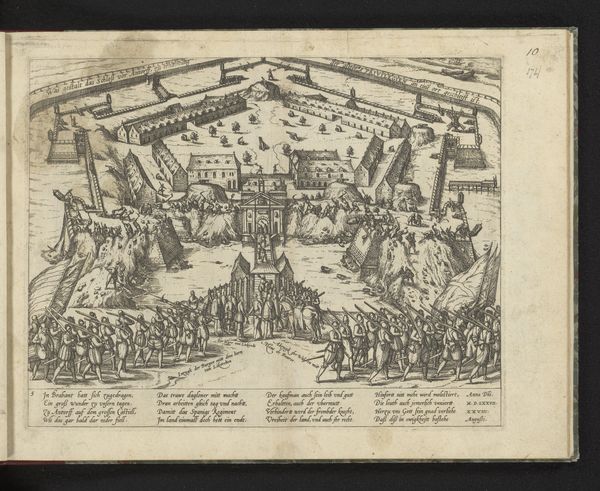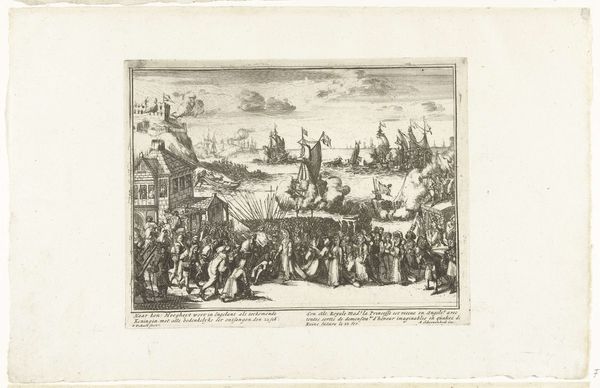
print, engraving
#
baroque
#
dutch-golden-age
# print
#
old engraving style
#
cityscape
#
history-painting
#
engraving
Dimensions: height 411 mm, width 527 mm, height 316 mm, width 116 mm, height 317 mm, width 114 mm
Copyright: Rijks Museum: Open Domain
Curator: This print, "Verovering van Grave door Willem III," by Romeyn de Hooghe, dating from 1674, depicts the conquest of Grave during the Franco-Dutch War. Editor: It’s incredibly detailed. I’m immediately struck by the sheer amount of activity crammed into this single sheet. It feels overwhelming, a real depiction of war's chaos. Curator: Absolutely. De Hooghe masterfully combines a bird's-eye view of the city of Grave with scenes of battle and military encampment. Notice the portraits of William III, carefully placed in laurel wreaths on either side of the map. Editor: It's fascinating how the map itself becomes a battleground. What interests me is the labor that went into this. Each tiny line, etched onto a metal plate and then printed—the craft required to create such detail is staggering. Curator: Indeed, the meticulous engraving serves to legitimize William III and his victory, echoing classical tropes of leadership. Consider the symbolism of Grave itself; its strategic importance amplified through this meticulous portrayal. Editor: And think about its distribution. This wasn't just a piece of art, but a means of disseminating political information, crafted and sold, reaching a wide audience, shaping public perception through material form. What paper was used? Where was it printed? The answers would tell us about the printing industry's role during the Dutch Golden Age. Curator: Precisely. This image also speaks to a moment in Dutch history brimming with a renewed sense of self. This isn't just about one city; it speaks volumes about Dutch resilience against Louis XIV. Editor: To think of this as just “history painting” feels reductive, though. It's also material culture. Who commissioned this, and how were they trying to sway public opinion? Curator: Studying prints like this one allows us a peek into the symbology that was used and understood. Every element is designed to evoke specific emotional responses and reinforce certain cultural narratives. Editor: And yet, for all the grandeur it tries to convey, remembering the processes and materials roots this in labor and context that is perhaps more authentic than the idealized image presented. Curator: Yes, examining those perspectives allows us to fully realize the artwork’s function. Editor: Ultimately, considering its impact and how these images can form our understanding of both conflict and material processes.
Comments
No comments
Be the first to comment and join the conversation on the ultimate creative platform.
